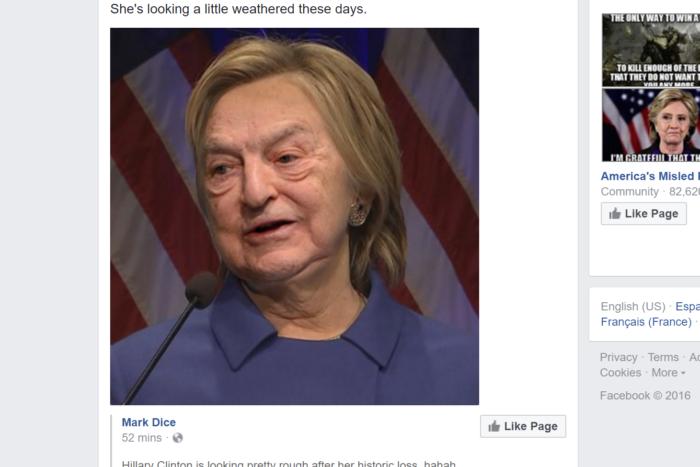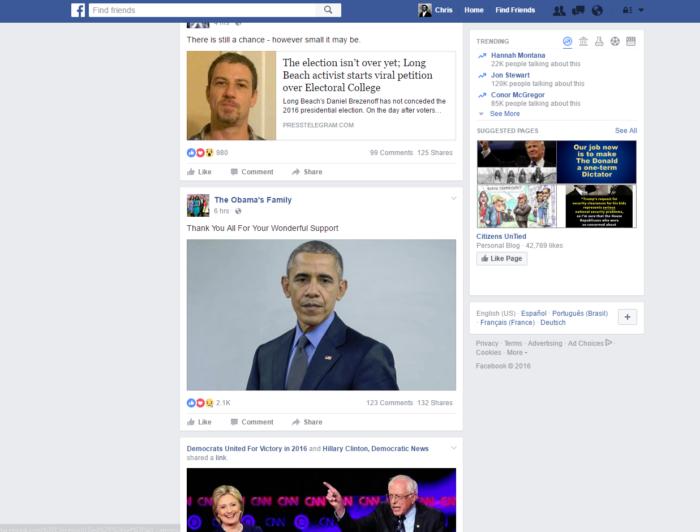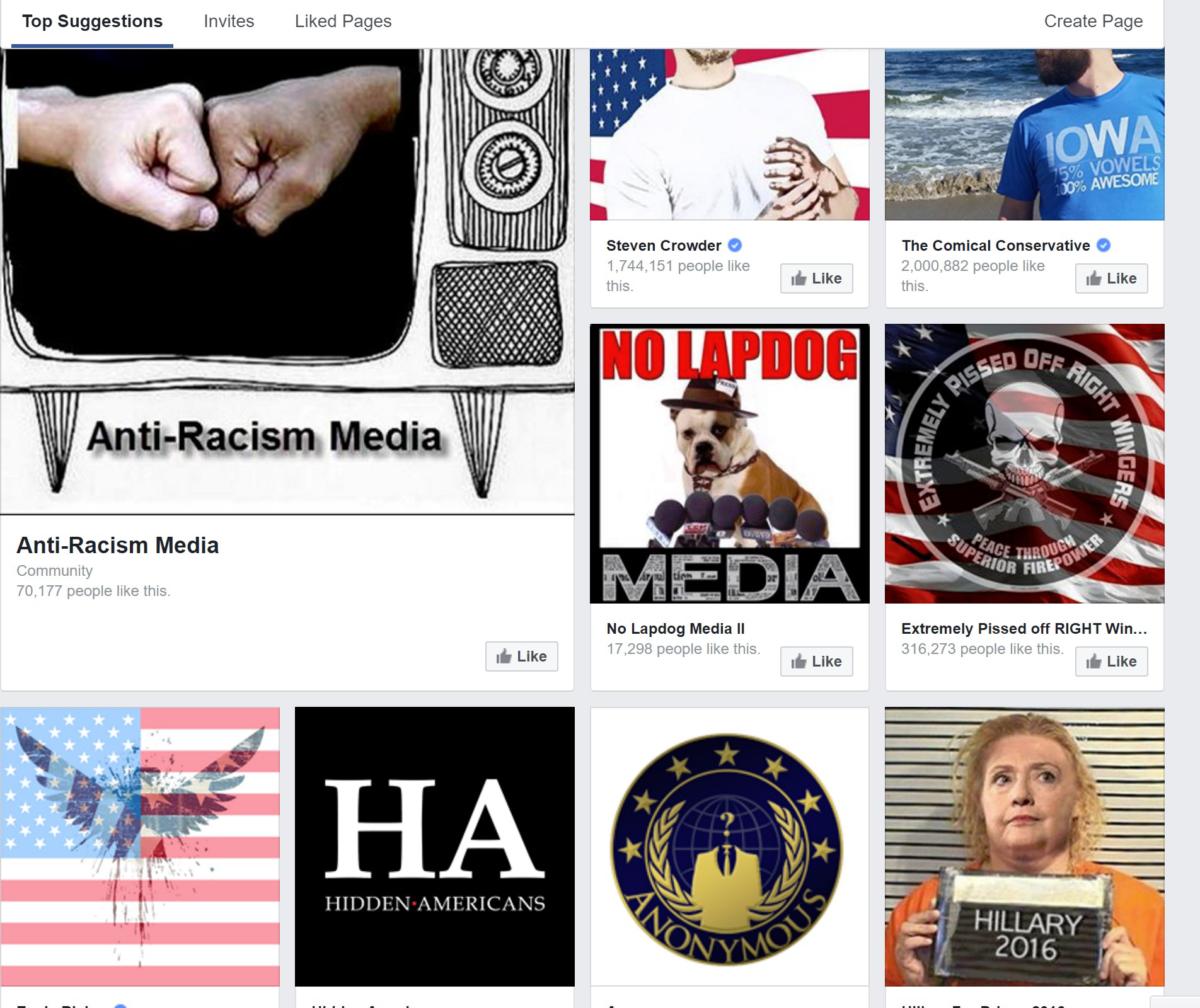
It was only a few minutes after my imaginary Trump supporter “Todd White” began exploring Facebook that he learned filmmaker Michael Moore was staging a coup d’etat against president-elect Donald Trump. Todd also learned that Trump won the popular vote. And that there were people paid to protest at Trump rallies.
None of that is true, of course. That’s the sort of fake news that was disseminated by Facebook—bogus content that many believe was written by partisan groups to influence the election. That belief was apparently confirmed Thursday, as The Washington Post reported that Facebook had sold ads to Russian “troll farms,” presumably to influence the election. Previously, Senator Mark Warner (D-Va.) had warned that potentially thousands of “trolls” had published posts to spread disinformation about Hillary Clinton.
But how do Facebook users end up seeing it? During November 2016, we decided to test who’s seeing this partisan fake news, who’s supplying it, and just how obvious it is.
We began our investigation on Nov. 21, 2016, as the fake-news controversy gained momentum—and Facebook and Google began blocking sites that traffic in disinformation from their respective advertising networks. We set up two Facebook accounts, one favoring Hillary Clinton, and the other supporting Trump, then let Facebook recommend a series of news pages. In effect, we were asking Facebook to be our news service.
Then we sat back and watched the news roll in. We looked closely at each post to determine whether it was real news, fake news, or something in between.
Fake news is a real problem
Questions about Facebook’s role in spreading fake news were raised almost as soon as Trump shocked the world with his victory. BuzzFeed and other news sites began publishing reports about how a small town in Macedonia turned fake election news into a cottage industry.
It appears the authors behind the fake news reports had no partisan agenda. They were just in it for the money. One creator claimed he could make $10,000 per week in ad revenue from stories that were shared among Trump supporters.

Mark Hachman
The Macedonians may still be at it, because our Republican supporter, Todd White, was flooded with partisan posts. Worse, over a little more than two days, we counted 10 such posts in his feed that were fake, most accusing Democrats or their supporters of illegal activity. In all, White was clearly exposed to more spin than his Democratic counterpart, Chris Smith, who saw exactly zero fake news stories.
But the problem goes beyond fake news. As Facebook’s feeds prove, we live in a “post-truth” world, where the line between partisan spin and outright lies is practically indistinguishable.

- Letting Facebook choose the news
- Into the cesspool
- Fake news and propaganda
- Major change is needed at Facebook
- Fake posts
Letting Facebook choose the news
To conduct our experiment, I opened Google Chrome in Incognito mode, then created two Gmail addresses. I then used both email addresses to register for new Facebook accounts—“Chris Smith” for Clinton, and “Todd White” for Trump. To eliminate hidden biases, I registered them both as white males, each with the same birthday.
For Smith, I then Liked three people: Hillary Clinton, Joe Biden, and President Barack Obama. For White, I Liked Donald Trump, Mike Pence, and Newt Gingrich.

[“Source-indianexpress”]

